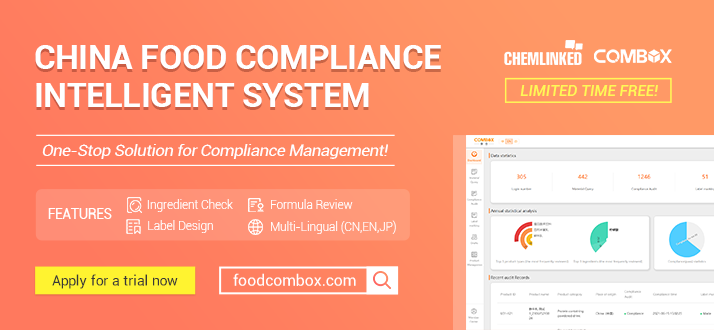How to Amend a Registered Pesticide Product under the U.S. EPA?
As is well known, the US EPA pesticide registration has always been a difficult task for pesticide enterprises. Enterprises usually have to spend a huge amount of cost to complete a pesticide registration under the US EPA, but subject to registration amendments afterwards due to various reasons, such as trade market demands, formula changes, active ingredient source changes, label changes, etc.
What’s the difference between the pesticide registration amendments and new registration? Is the registration amendments easier than new registration?
In this article, REACH24H will give a detailed introduction to pesticide registration amendments under the US EPA.
What is Pesticide Registration Amendment?
Registration amendments are required when any changes in composition, labeling and packaging of registered pesticide products occur. According to the content of the changes, registration amendments can be categorized into three types: amendment application, notification and non-notification.
| Registration Amendments | Amendment Application | Fast-track Amendments |
|
| General Amendments |
|
||
| Notification |
|
||
| Non-Notification |
|
||
A Detailed introduction of the three types is as follows.
Type One: Amendment Application
The content of changes involved in the amendment application is relatively complex. The amendment contents must be submitted to the EPA for evaluation. After the Agency approves, the modified pesticide products can be legally sold and distributed in the US market.
This type is divided into two categories based on whether data submission and payment of PRIA fee are required:
1. Amendments Requiring No Scientific Review of Data (Fast-track amendments)
Fast track amendments include labeling changes and basic or alternate product formulation changes that do not require supporting data. Fast track amendments are also not subject to PRIA fees.
• Formula Change
Basic and alternate formula changes may be accomplished by amending a current registration only when the new formulation remains substantially similar to the original formula.
• Labeling Change
Addition or deletion of some claims against a pest on the label that does not pose threat to public health. The registrant is not required to submit efficacy data for the Agency to review.
2. Amendments Requiring Product-Specific Data (General amendments)
The general amendments are required to submit product-specific data to support the registration amendments. As the Agency needs to review the submitted data, it will not expedite the application. At the same time, PRIA fee is required for such amendments.
General amendments mainly include the following three cases:
• New purpose of use
New purpose of use refers to usages that are not registered for the currently registered pesticide products. For example, the use of a new crop or animal feed, or a change in the use pattern from indoor to outdoor.
• Change of active ingredient source
Manufacturer of the active ingredient of registered pesticide products changes, and such a new source is an unregistered source of the active ingredient.
• Change of product’s claims, precautions or use directions, etc
For example, the addition of claims related to public health.
Type Two: Notification
If the minor changes of the product do not pose unreasonable adverse effects to the environment, the registrant only needs to notify the EPA of such changes.
Notification mainly includes the following two cases:
• Labeling Notification
Data submission is not required for labeling changes, such as trademark name changes.
• Product Chemistry Notification
- The alternate source of active ingredient has been registered for the same uses as the registered product and is similar to the current source, i.e., the certified limits of active ingredient from the new source and relevant impurities are the same as that from the current source.
- Changes of the inert ingredient, including change in source, change in nominal concentration and change in the certified limits.
- Changes in sources for starting materials for integrated systems products.
- Changes to the formulation process for non-Integrated systems.
Type Three: Non-notification
Registrants can make certain changes to the pesticide labels without notifying the Agency.
For example:
• Typographical and Printing Errors
• Changes in Package Size and Net Contents
• Revision, Addition, or Deletion of Non-FIFRA Related Label Elements
• Transfer of Ownership
• Changes in the Name or Address of the Registrant on the Label
• Redesign of Label Format
• Nonpesticidal Characteristics
-
- The following are examples of nonpesticidal characteristics statement changes allowed by non-notifications:
- Nonpesticidal Effectiveness;
- Cleanup or Ease of Removal;
- Effects on Treated Objects or Sites;
- Price or Price-Related Marketing;
- Where a Product Is Made;
- Approval by Other Federal Agencies;
- Consumer Access Numbers; and
- Use of the Words “Other Ingredients” in the Ingredients Statement.
- The following are examples of nonpesticidal characteristics statement changes allowed by non-notifications:
The above explanation is only the tip of the iceberg for pesticide registration amendments. The US EPA registration amendments documentation requirements vary for different pesticide types.
REACH24H has abundant successful experience in assisting enterprises to complete pesticide registration amendments. If you have any questions or need support, please feel free to contact us.
Telephone: +86 (0)571-87006630
Email: customer@reach24h.com




